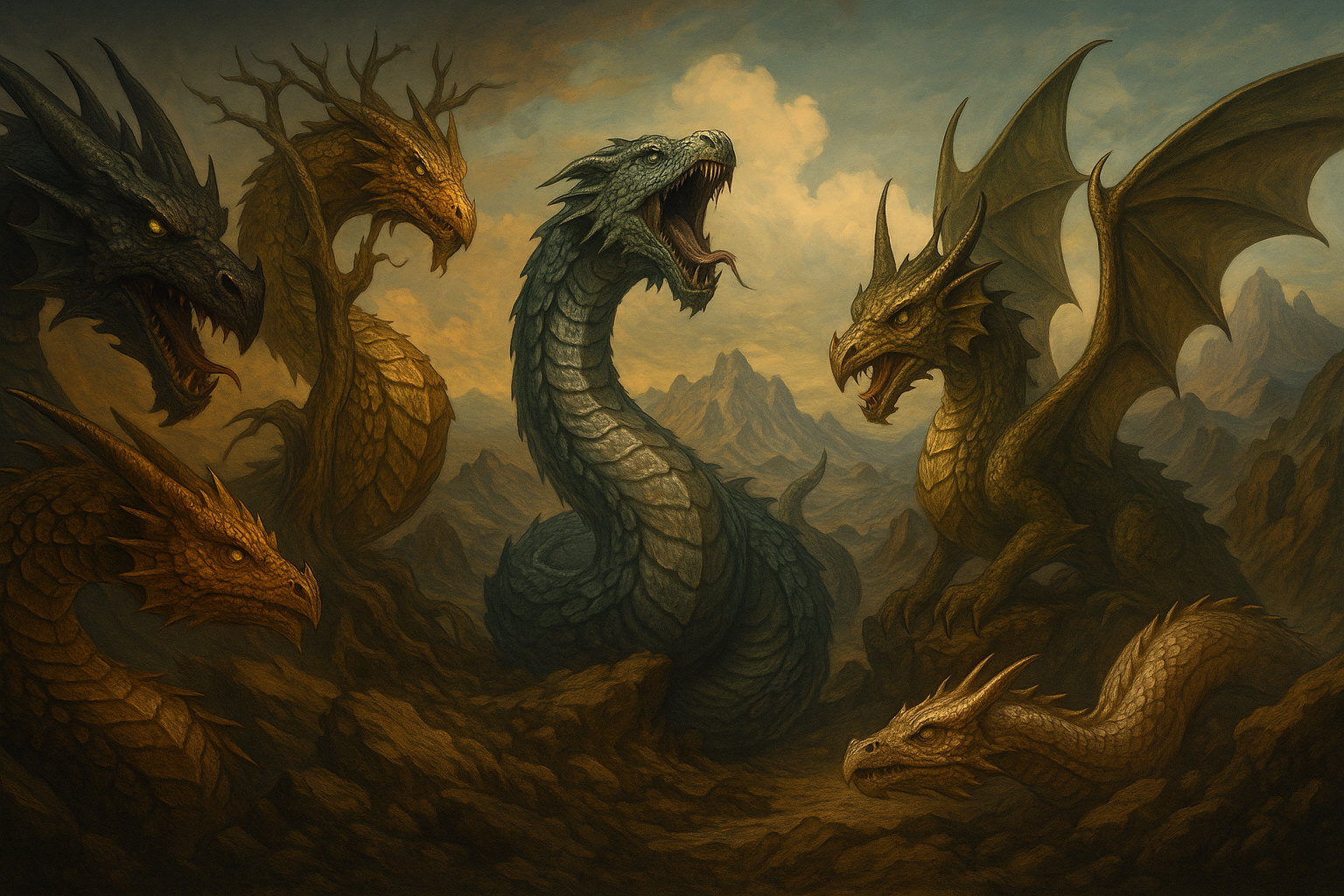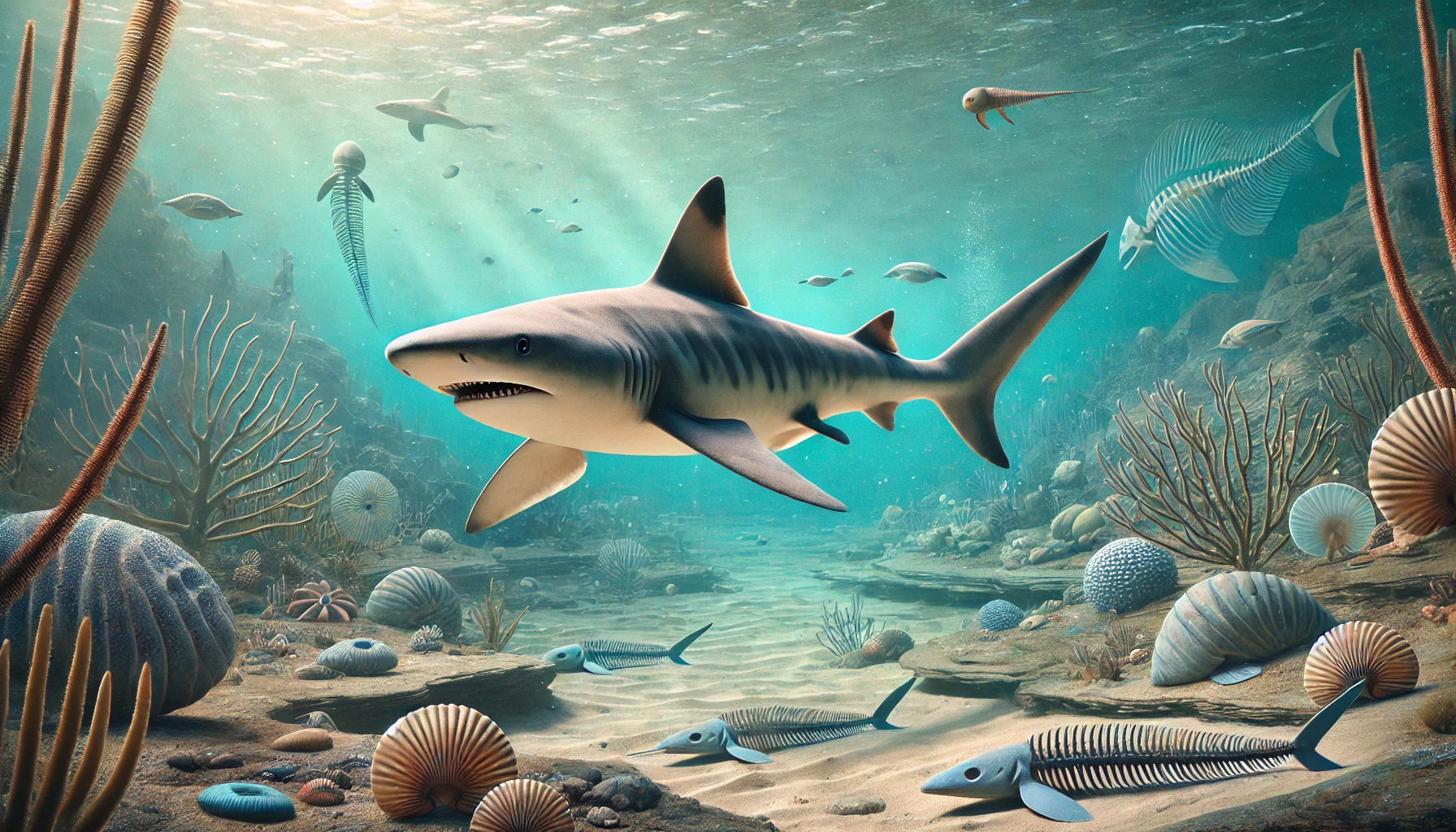In Norse mythology, dragons weren’t just fire-breathing beasts — they were symbols of chaos, greed, power, and fate. These serpentine creatures played key roles in the cosmic struggle between order and destruction. From soul-eating wyrms to world-wrapping serpents, here are seven of the most awe-inspiring dragons from the icy North.
🕳 1. Níðhöggr – The Corpse Devourer
Home: Beneath the roots of Yggdrasil, the World Tree
Role: Eternally gnaws at the tree’s roots and feasts on the corpses of the damned.
Symbolism: Represents the relentless forces of decay and punishment.
🗣️ “Nídhöggr sucks the corpses of the dead” — Völuspá, Poetic Edda
This monstrous dragon is said to communicate through the squirrel Ratatoskr, who spreads insults between Nídhöggr and the eagle perched atop the World Tree. A terrifying embodiment of destruction gnawing at the fabric of existence itself.
🐲 2. Fáfnir – The Greedy Guardian
Origin: Once a dwarf, transformed into a dragon by his own greed.
Treasure: Guarded the cursed gold of Andvari and a magic ring.
Death: Slain by the hero Sigurd, who gained the ability to speak with birds after tasting the dragon’s heart.
🗣️ “He who hoards gold shall one day be devoured by it.” — Saga of the Volsungs
Fáfnir’s tale is one of envy, transformation, and divine irony — a creature who became what he feared most, and died protecting a treasure that brought nothing but ruin.
🌊 3. Jörmungandr – The Midgard Serpent
Lineage: Offspring of Loki and the giantess Angrboda
Domain: Encircles the entire world, biting his own tail
Fate: Will kill and be killed by Thor during Ragnarök
🗣️ “When Jörmungandr uncoils, the world shall tremble.”
This colossal sea serpent is the Norse take on the ouroboros — a cosmic loop of chaos. In the end times, he will rise from the ocean, spew poison across the skies, and battle the Thunder God in a mutual deathblow.
🐍 4. Lindworm – The Wingless Horror
Appearance: A long, serpentine dragon with two legs and no wings
Lore: Common in Scandinavian and Germanic legends
Traits: Venomous, cunning, often guards tombs or treasure
Lindworms blur the line between dragon and snake, haunting ancient ruins and forests. They were feared not only for their venom, but for their unnatural intelligence and love of riddles.
🐉 5. Grábakr and Góinn – The Root-Twisters
Mentioned in: Grímnismál, Poetic Edda
Habitat: Dwell beneath Yggdrasil, chewing on its roots
Role: Agents of entropy, quietly unraveling the tree that holds the cosmos
Though less famous, these twin serpents are vital to the Norse cosmic cycle — ever gnawing, ever undermining the balance.
💀 6. Grafvitnir – The Grave Snake
Name Meaning: “The Ghostly Howler”
Associated with: The dead, shadows, and underworld guardianship
Grafvitnir may not appear in many stories, but he is a grim reminder that in Norse lore, death is never far from the roots of the world.
🔥 7. Mythical Sea Dragons of Ragnarök
Besides Jörmungandr, Norse lore hints at other oceanic beasts who will rise during the final battle. These monstrous sea-dragons are foretold to surge from the deep alongside the fire giants of Muspelheim, bringing chaos in their wake.
🗣️ “The seas will boil and beasts shall rise… old gods shall fall.” — Ragnarök prophecy
🎯 Conclusion: Dragons Beyond Fire
Unlike Western dragons who hoard gold and burn castles, Norse dragons are raw forces of nature — symbolic, catastrophic, and entangled in the cycle of life and death. They speak of greed, destruction, fate… and the end of all things.
Perfectly at home among other legendary creatures like the Loch Ness Monster, these Norse wyrms echo across time as some of mythology’s most iconic — and feared — beasts.









